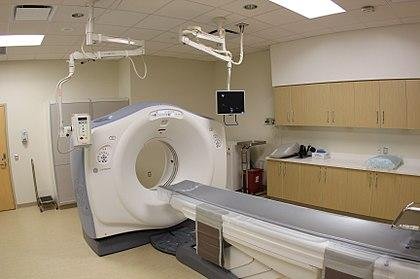Computed tomography scans use computer-processed combinations of many X-ray measurements taken from different angles to produce cross-sectional images of specific areas of a scanned area. Engineers have developed an artificial intelligence system more accurately than radiologists. Photo by
daveynin/Wikimedia Commons
Aug. 22 (UPI) -- Researchers have developed an artificial intelligence system to detect lung cancer on scans that radiologists fail to detect.
The AI method can notice specks of lung cancer with about 95 percent accuracy compared with 65 percent by radiologists, according to research conducted by the University of Central Florida's Computer Vision Research Center. The researchers published their findings in the Cornell University Library before the Medical Image Computing and Computer Assisted Intervention Society's conference next month in Granada, Spain.
Computed tomography, or CT, scans use computer-processed combinations of many X-ray measurements taken from different angles to produce cross-sectional images of specific areas of a scanned area.
"I believe this will have a very big impact," Ulas Bagci, an engineering assistant professor at UCF, said in a press release. "Lung cancer is the number one cancer killer in the United States and if detected in late stages, the survival rate is only 17 percent. By finding ways to help identify earlier, I think we can help increase survival rates."
The system is much like algorithms used in facial-recognition software that scan thousands of faces looking for a particular pattern for a match.
Researchers taught the system the technique by feeding it 1,000 CT scans from the National Institutes of Health, through a collaboration with the Mayo Clinic. They then tested their system on 888 chest CT scans.
"We used the brain as a model to create our system," said Rodney LaLonde, a doctoral candidate and captain of UCF's hockey team. "You know how connections between neurons in the brain strengthen during development and learn? We used that blueprint, if you will, to help our system understand how to look for patterns in the CT scans and teach itself how to find these tiny tumors."
The computer was taught how to ignore other tissue, nerves and masses.
The researchers plan to test the project into a hospital setting, then ideally put it on the market in two years.
"I think we all came here because we wanted to use our passion for engineering to make a difference and saving lives is a big impact," LaLonde said.















